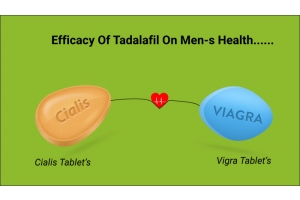Your Home Is Making You Infertile (Part 1)
The act of conceiving a baby may look easy— thanks to our overly-twisted movies and loosely-written books; however, the reality is something else.
In the real world, the rate of infertile couples has gone up like never before, and who’s to be blamed?
Sexologists reveal that male contribute to 45 to 50% of infertility.
The thirst of expanding the family may perish because of the products you use at your home.
No matter how much you love your home, a lot of material including the furniture items may make you an owner of barren land— the land which can’t reproduce.
So, look for these items to handle your infertility.
Solvents— all set to bite either gender.
Solvents are everywhere.
They have the chemical conveyors which are known to affect the fertility of either gender.
It affects the quality of semen in men whereas it disturbs the menstrual cycle for women, thereby enhancing the probability of miscarriage.
If you want to look for these solvents, look at your wall paints, rubbers, resins, detergents, dye colors, skin cosmetics, douches, nail paints, etc.
Since these items are around you, and solvents diffuse (high volatility) in the air; you may inhale them into your circulatory system which may disseminate to the different parts of the body.
One of the studies confirms the claim that using solvents decreases the infertility of either gender; howbeit, it has a more significant detrimental effect on women. [1]
What to do: As these products contain “volatile organic compounds,” you should look for non-VOC or low-VOC items.
Flame retardants— cook up your eggs.
Flame retardants are the diverse group of compounds which are applied on sofas, couches, carpets, and other interior materials to prevent the action of fire flames.
As these retardants use chemicals to stop the fire flames, they also get into our bodies through the respiratory system.
Some of the latest anecdotes indicate that flame retardants affect sperm quality in men.
Furthermore, it increases the risk of infertility in women which makes it difficult for embryonic development and disruption in sex hormones. [2]
Another study confirms that the presence of top three retardants chemical in the body decreases the rate of fertilization by 10 percent.
What to do: It’s difficult to imagine life without plushy cushions and couches; however, if you want a productive life, you should look for alternatives which don’t use retardants or something made up of cotton or wool.
Soap items: sweep off the fertility.
Soap items are inevitable when it comes to cleaning; however, soaps weren’t developed to keep you clean but to keep you infection-free (especially in the hospitals).
But we have programmed ourselves to get used to soap items which use chemicals such as triclosan.
One of the studies link the association between the exposure of triclosan and the degrading male fertility.
It also highlighted how the chemical induced abnormalities in the sperm and the test found the positive results for the following facets— sperm DNA damage, total sperm disomy, semen quality parameters, and the level of reproductive hormones. [3]
What to do: There’s no way either you or any one of us can give up on soaps; however, minimizing their use and resorting to natural means such as curd solution or soily potion may help us achieve better reproductive abilities.
Hard plastic bottles: sinking your swimmers.
If you have been carrying hard plastic bottles at the office or gym, there’s a fair chance that you will drown your swimmers.
Didn’t get it?
Hard plastic bottles have A-BPA (bisphenol) chemical— the chemical coating which works as a firewall for protecting the “can items.”
A close inquiry on the Chinese workers who worked in the BPA manufacturing companies revealed shocking results.
The women workers with high BPA intake were more infertile than the ones without it. [4]
Similarly, the compound toxicated the male reproductive system which lowered the sperm count, vitality, and motility. [5]
What to do: The only way to leap over BPA chemical is to avoid cans and plastic bottles which seems to be an uphill task.








